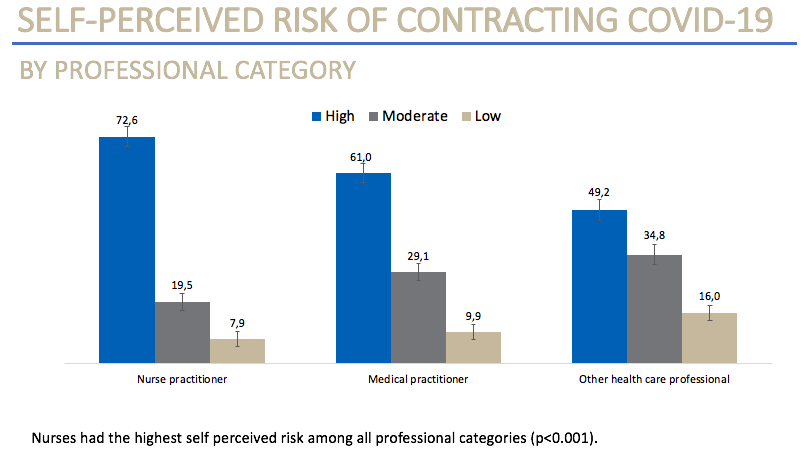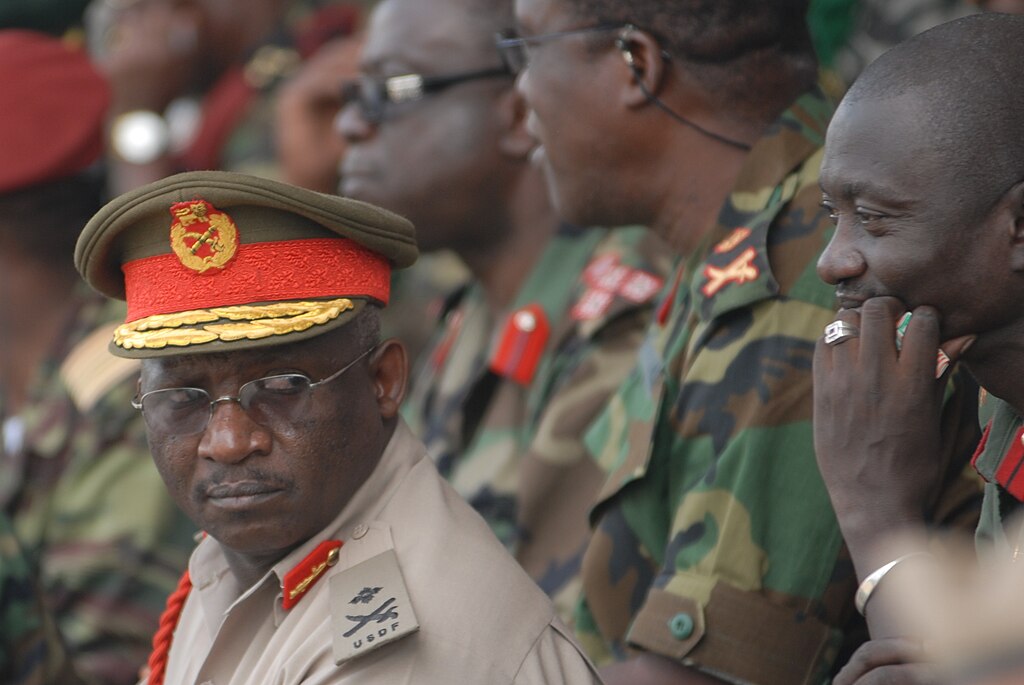In the early phases of the COVID-19 pandemic, nurses were less confident in their COVID-19 training and had a higher perceived risk of infection than other medical practitioners. They were also more likely to experience severe distress, according to a recent HSRC and University of KwaZulu-Natal (UKZN) survey. At a recent webinar launch of the results, the research team recommended equitable training, better communication and a wellbeing framework to support health-care workers.
“Nurses are the backbone of the health-care system,” said the HSRC’s Professor Priscilla Reddy, quoting the State of the World’s Nursing Report 2020. Nurses comprise almost two-thirds (65%) of South Africa’s health-care workers. And, according to the results of a collaborative survey led by the HSRC and UKZN College of Health Sciences and Edendale Hospital, they are taking strain.
Conducted from 11 April – 7 May 2020, the survey investigated health-care workers’ experiences in dealing with COVID-19 in the early stages of the pandemic, Reddy said, speaking at the webinar launch of the survey results in August.
Medical professionals around the country were invited to participate via the biNU data free platform. To increase the reach, Reddy’s team received support from a number of organisations across the country, including the South African Nursing Council. A total of 7600 health-care workers participated, and the data was weighted by age, sex, population group and province to reflect the national distribution of health care professionals.
“It’s my understanding is that it’s probably the first survey of this nature, with or without COVID that has been done in the country,” Reddy said.
Inadequate training, knowledge
The team found that, despite the rapidly climbing case numbers at the time, nurses in particular reported lack of preparedness for the pandemic. Just 42% of nurses felt confident in their general COVID-19 knowledge, compared to 55% of medical practitioners.
The study also revealed a large gap in the reported training across the medical professions: for example, 41.5% of nurses compared to 70.3% of health-care practitioners reported receiving training about treatment guidelines. For training with regard to ‘declaring patient recovered’, these figures were 23.1% and 37.4% respectively.

“We want to make an argument that all health-care professionals would need to receive training in these different areas, but training appropriate to the professional,” said Professor Mosa Moshabela, Dean and head of School, Nursing and Public Health of UKZN.
Among nurses, less than half reported being trained in treatment guidelines and declaring patients as recovered.
Primary sources of COVID-19 information also differed across health-care professionals. Nurses were more likely to use social media and web articles, while a higher proportion of medical professionals relied on journal articles and the Department of Health. Health professionals working in urban areas were also significantly more likely to use official health organisation websites and scientific journals than those working in rural areas.
Moshabela noted that inadequate training and information might have contributed to the lower reported confidence among nursing practitioners. “When people have information and they’ve been trained, this contributes to their confidence in terms of knowledge.”

Nurses also had the highest level of risk perception. “We know from the literature that if your knowledge is low and your confidence is low, your risk perception will increase,” Moshabela said.
Indeed, the study found that medical practitioners who were not confident in their overall knowledge of COVID-19 were significantly more likely to have high-risk perception (71% compared to 55% among those reporting confidence). Knowledge of correct personal protective equipment also decreased the chance that a health-care worker reported being at high risk for COVID-19.
Despite higher case numbers in Gauteng and the Western Cape at the time of the survey, nurses in these provinces reported lower personal risk. The discrepancy might reflect greater access to information, infrastructure and support in urban areas. But, Moshabela added, “it may also be a reflection of trust in the health-care system”.
Moshabela noted as a limitation of the study that the study participants were predominantly from urban areas, suggesting a need to find novel ways of reaching potential patients in rural areas. “It would be important in future to think about how to diversify recruitment processes.”
Impact on mental and physical health
Nurse practitioners, and particularly those in the public sector, were more likely to report severe distress compared to other health professionals. One in four nurses reported severe distress, compared to one in six medical practitioners. Additionally, almost half (41.0%) of nurses were extremely concerned about family members. For medical practitioners, this figure was 28.1%,
Nurses reported the lowest general health and well-being, the survey revealed. Physical health was inversely correlated with distress, pointing to the integral nature of mental health and physiological wellbeing. Moshabela stressed the need for a health and wellbeing framework – including situational counselling – to support health-care workers in times of pandemics.
The study comes against a backdrop of a long-standing national nursing shortage, attributed to inadequate health-care expenditure and a lack of training.
The survey team made a number of other recommendations to improve health-care workers’ experiences during break-outs, including streamlined communication and equitable training to increase confidence and lower perceived risk and associated distress.
Said Moshabela, “We have found that there isn’t a clear communication strategy to make sure that information can be relayed to health-care workers through a reliable source in a way that is timely, that is regular, that is factual and is not sensationalised.”
Photo (top): Gerd Altmann, Pixabay


